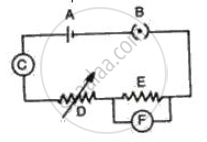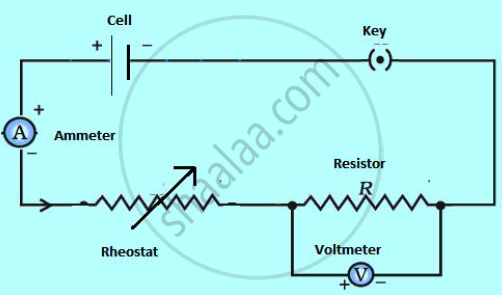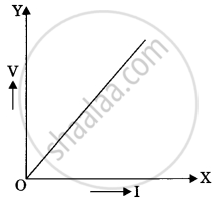Advertisements
Advertisements
प्रश्न
Fig. represents the circuit used for the verification of ohm's law. Label the different parts from A and F. State the function of each.

उत्तर

Functions:
(A) Cell- It provides the potential difference in the circuit.
(B) Key- It serves as a switch in the circuit. It supplies or cuts off current as required.
(C) Ammeter - It measures the current in the circuit.
(D) Rheostat- It helps to change the resistance of the circuit without changing its voltage.
(E) Resistor- It provides a constant resistance in the circuit.
(F) Voltmeter - It measure the potential drop across the resistor.
APPEARS IN
संबंधित प्रश्न
Ohm's law gives a relationship between:
(a) current and resistance
(b) resistance and potential difference
(c) potential difference and electric charge
(d) current and potential difference
Calculate the current flowing through a wire of resistance 5 Ω connected to a battery of potential difference 3 V.
A wire has a length of 2.0 m and a resistance of 5.0 Ω. Find the electric field existing inside the wire if it carries a current of 10 A.
Draw a neat diagram for the verification of Ohm’s law by voltmeter-ammeter method. By another diagram show the relation between p.d. and current.
Explain the equivalent resistance of a series resistor network.
Which of the following I-V graph represents ohmic conductors?
The slope of voltage (V) versus current (I) is called:

Assertion: The statement of Ohm’s law is K = IR.
Reason: V = IR is the equation which defines resistance.
Why should an ammeter have low resistance?
